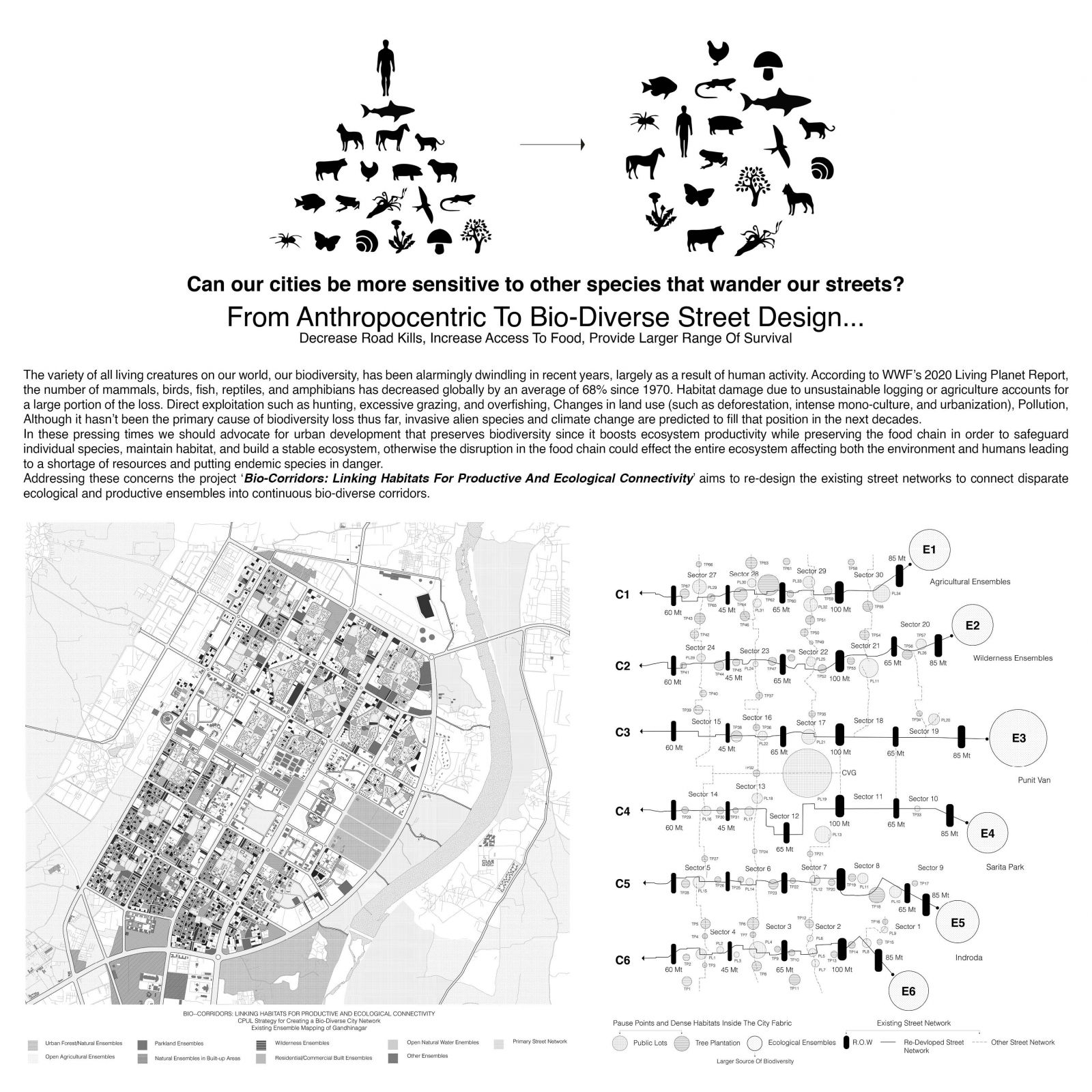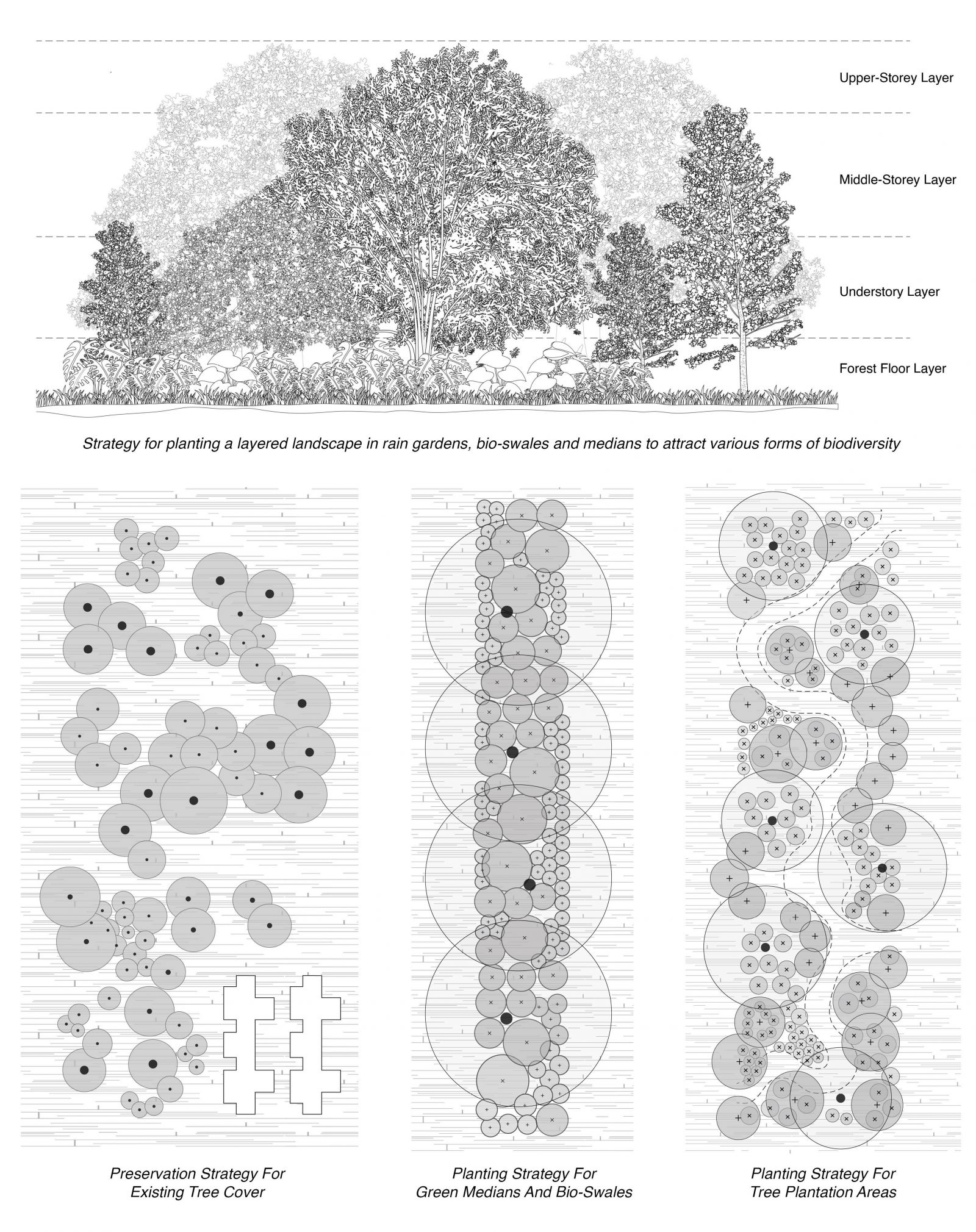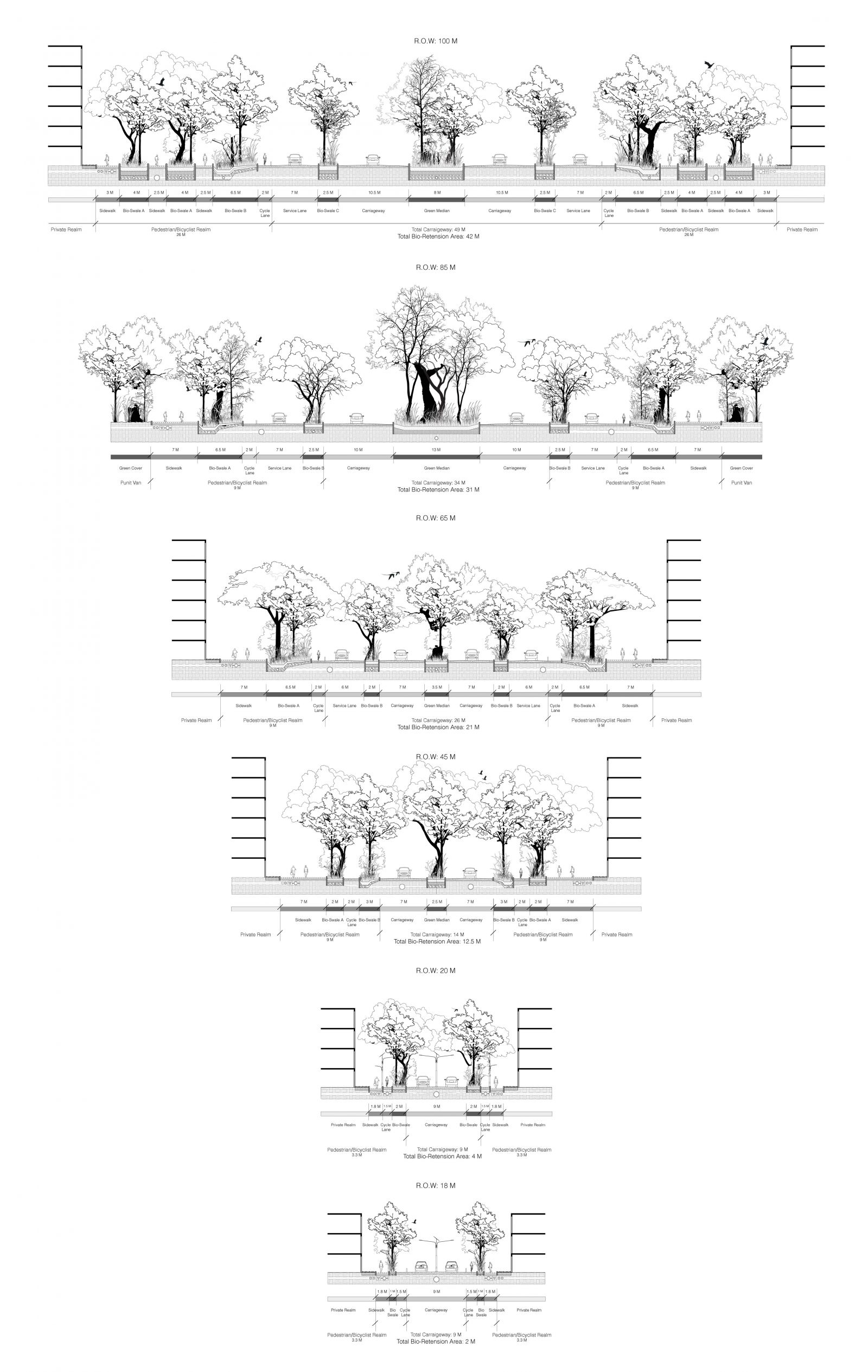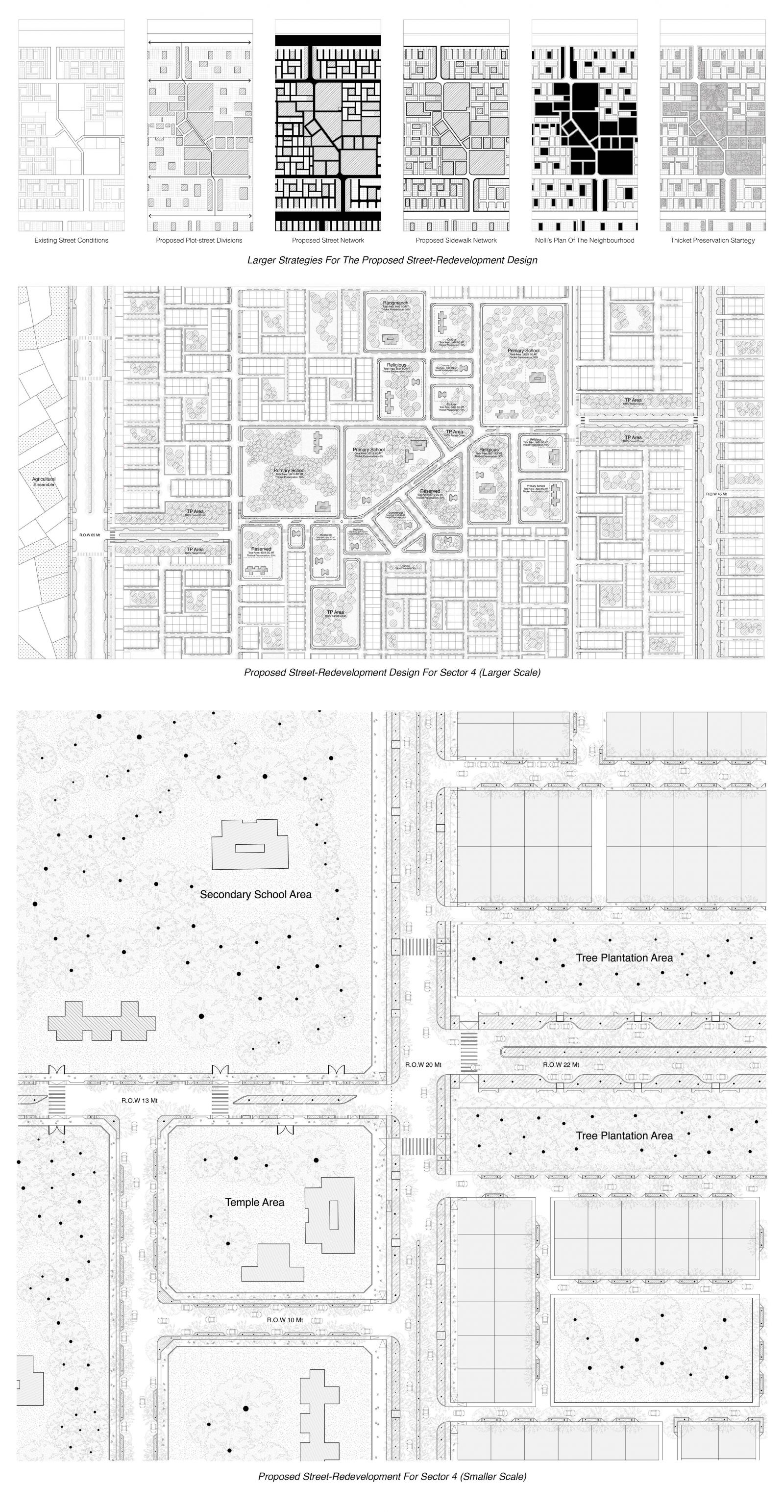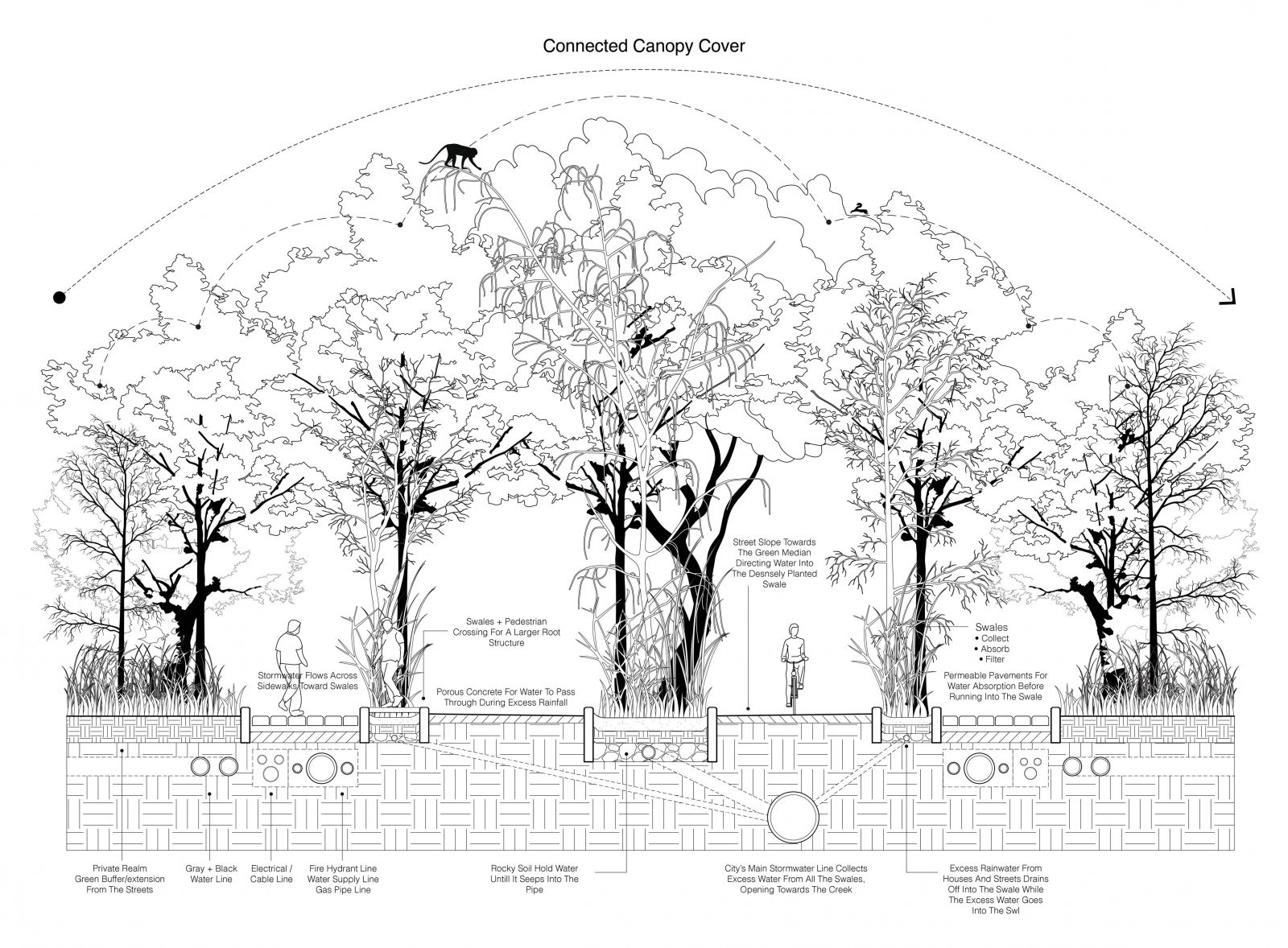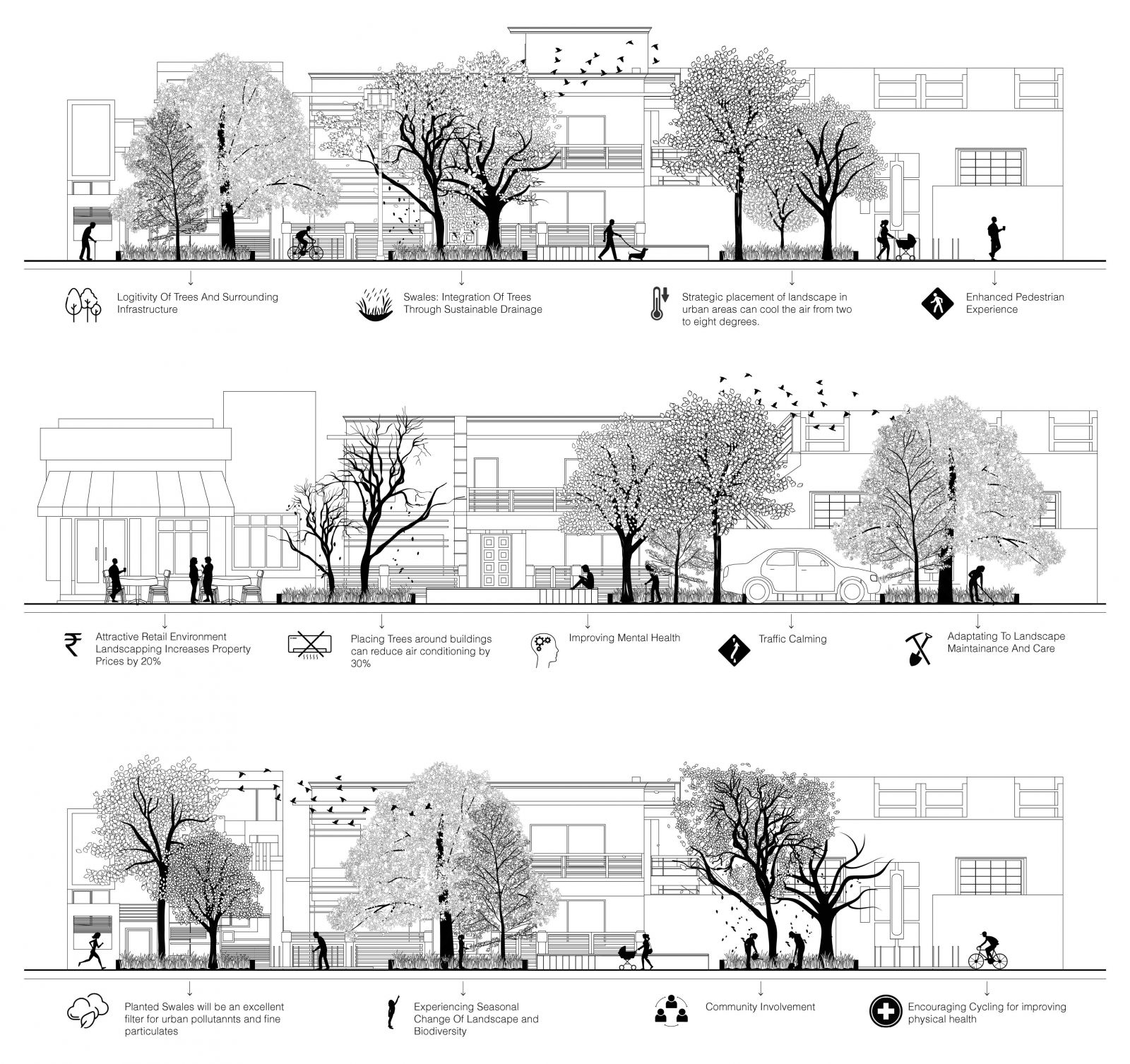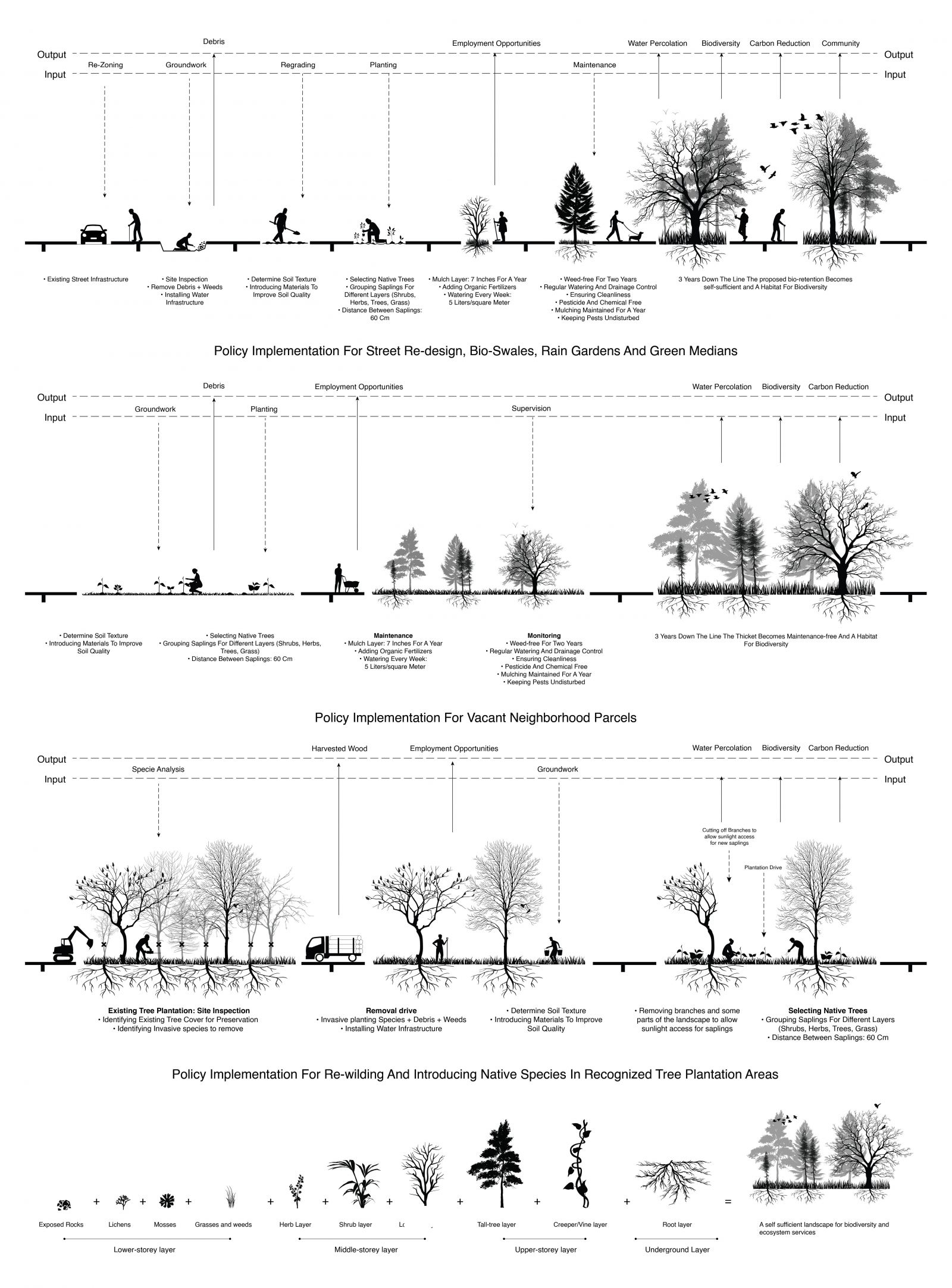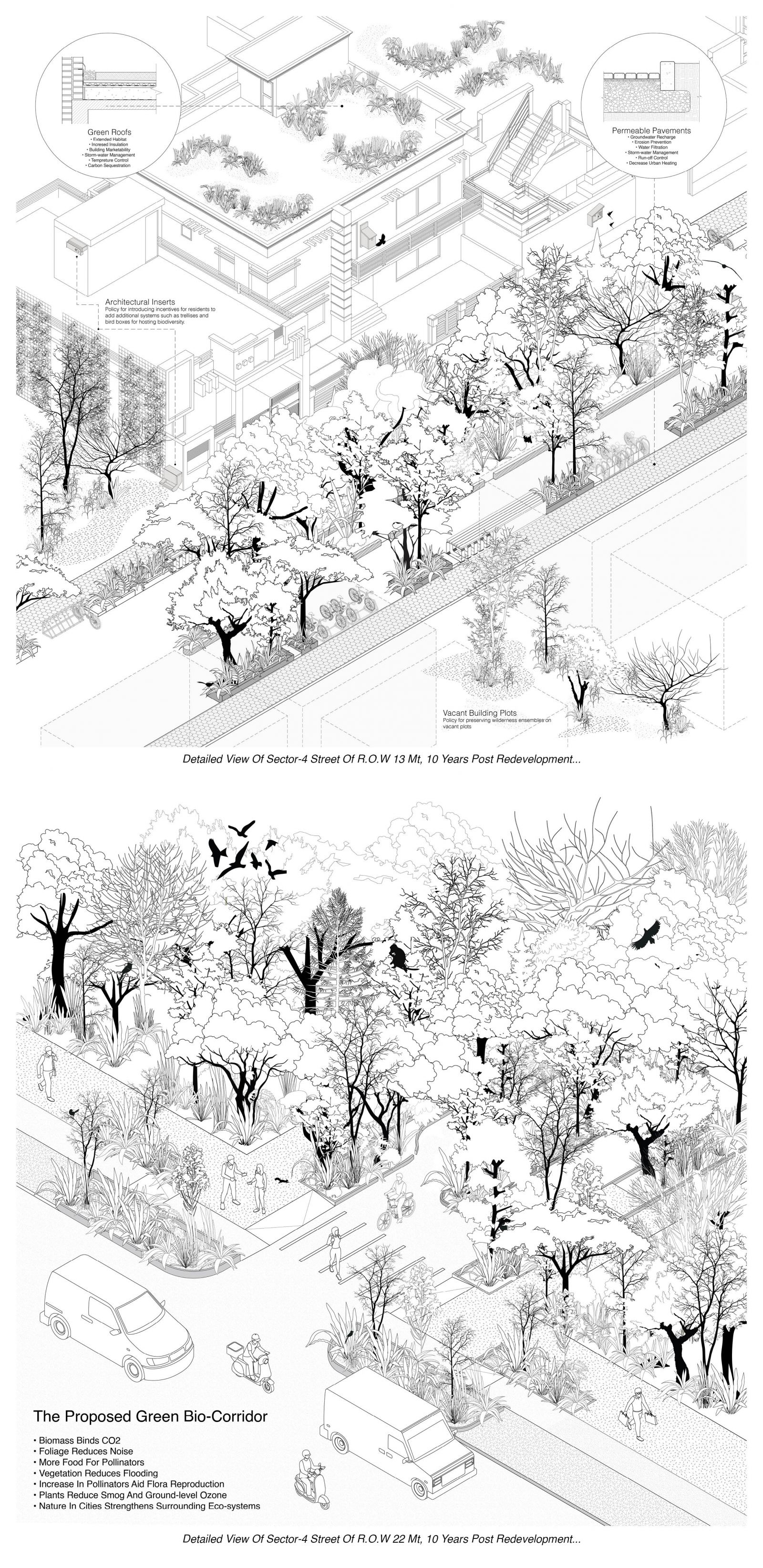Your browser is out-of-date!
For a richer surfing experience on our website, please update your browser. Update my browser now!
For a richer surfing experience on our website, please update your browser. Update my browser now!
The project redesigns the inner street networks to connect disparate ecological and productive ensembles into continuous biodiverse corridors. Gandhinagar has approximately 40% under green cover. The study attempts to club these lands under different ensembles such as Forest, Park, Planned, Agricultural, and Wilderness. Mapping these revealed they are fragmented and sparsely distributed. The project thus redesigns street networks to connect disparate ecological and productive ensembles into continuous biodiverse corridor systems. The tertiary streets are proposed to become six continuous green filaments connecting peripheral ecological ensembles to the city center while Introducing various bio-retention strategies on streets. This is achieved by continuous medians and bioswales/rain gardens. The Primary streets are for people to engage with biodiversity, The city ring road becomes a green buffer for pollution control, and green thickets on adjacent lots are identified for conservation. These strategies at the city scale will build a continuous habitat, introduce a larger range of survival, provide food for fauna, enable water percolation, and reduce the urban heat island effect while contributing towards ecosystem services and climate change. Click here for an extended Portfolio.
View Additional Work